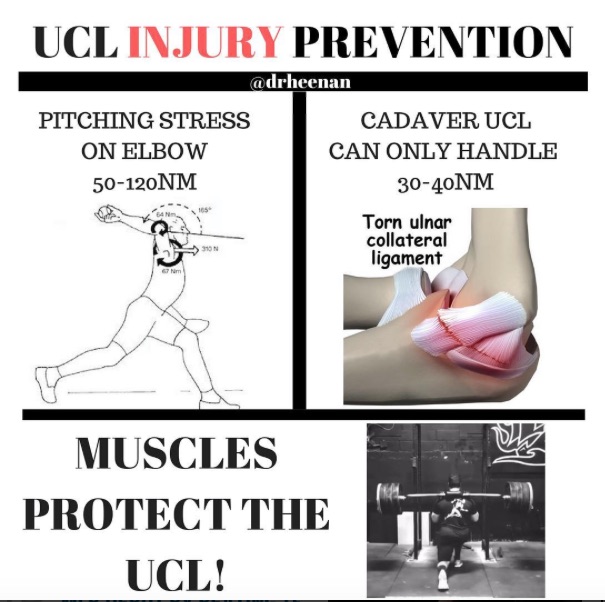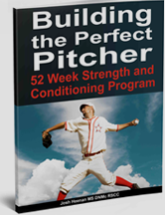Trace Increased Mound Velocity From 77 To 85 MPH In A Year With ATP
Trace Florio, remote client. Over the past year Trace’s mound velocity has jumped from 77 mph to 85 mph. Trace has put on 21 lb and increased his 90 mph formula numbers drastically in that time. Over the next coming months, we want Trace to continue to add bodyweight and improve his 90 mph formula numbers. This will allow him to add more velocity, strength, and stability.
October 2019 #90mphformula Metrics:
Height: 5’11”
Weight: 142 lb
Height/Weight Coefficient: 2.00
Deadlift: 255 lb x 1
Chin-up: 4 BW
Reverse lunge: 205 lb x 1
Long toss: 260 feet
Mound velocity: 77 mph
October 2020 #90mphformula Metrics:
Height: 5’11”
Weight: 163 lb
Height/Weight Coefficient: 2.30
Deadlift: 405 lb x 1
Chin-up: 11 BW
Reverse lunge: 255 lb x 2
Long toss: 305 feet
Mound velocity: 85 mph
To learn more about our remote programming services, visit our website by clicking here.
Jack Fox, Lander University Baseball, +4MPH In Four Months
Jack has been absolutely killing it since starting remote programming. I love how Jack, a Senior at Lander University, attacks his training in-season and leaves no stone unturned to make his ambitions to play at a professional level a reality.
As a Futures League All-Star, Jack has struck out a league-leading 55 batters in 47.2 innings with a 3.02 ERA.
Jack says, “Since starting with Advanced Therapy and Performance and Dr. Heenan months ago, I’ve packed on mass in all the right places. I’m throwing harder, my breaking stuff is breaking more than ever, my command has improved, and I’ve been having little to no arm soreness after 100+ pitches per outing. I came into the program with groin and hamstring problems, and both of them have disappeared.”
April 2019 #90mphformula Metrics:
Deadlift: 365 x 1
Chin Up: 10 BW
Reverse Lunge: 185 x 1
Long Toss: 350 feet
Bodyweight: 198 lbs
Mound Velocity: 89mph
July 2019 #90mphformula Metrics:
Deadlift: 405
Chin Up: 11 BW
Reverse Lunge: 225 x 1
Long Toss: 360+ feet
Bodyweight: 216 lbs
Mound Velocity: 93mph
To learn more about our remote programming services, visit our website by clicking here.
Ethan Doshi, University of Portland Infielder, Holistic Baseball Metric Improvements
Ethan says, “I was struggling to improve and couldn’t find anything that worked for me and was backed up by research, and then one day I was just scrolling on Instagram and I found your program and all of your posts made sense so I decided to work towards each of those metrics hoping it would increase velocity and make me a better athlete. What changed after I started working towards the formula was that I became a way better goal setter and felt a purpose to work harder every day knowing it was going to take time. What also helped was that my 60 time went from a 7.5 to a 6.9 in that time span too which to me seems correlated to parts of your program, and since I’m an infielder that helped a lot, also my exit velocity off the tee went from 84 to 92 with wood.”
March 2018 #90mphformula + Baseball Metrics:
Height: 5’9
Weight: 160lbs
Deadlift: 315lbs
Chin up: 190lbs (bw+30lbs)
Reverse lunge: 135×10 and 225×1
Long toss: 270ft
Run and gun: 86mph
Wood bat tee exit velocity: 84mph
60-yard dash: 7.5 seconds
April 2019 #90mphformula + Baseball Metrics:
Height: 5’10”
Weight: 177lbs
Deadlift: 445lbs
Chin up: 265lbs (bw+90lbs)
Reverse lunge: 225×10, 345×1
Long toss: 330ft
Run and gun: 94mph
Wood bat tee exit velocity: 92mph
60-yard dash: 6.9 seconds
Ethan’s insights are great, most specifically about goal setting. Having clear-cut metrics that are easy to quantify and strive for while directly impact performance and reducing injury risk factors allows each athlete to take ownership of their personal development. Accurate metrics to drive your program will elicit faster results allow you to make better decisions in training.
To learn more about our remote programming services, visit our website by clicking here.
Kaito Farquharson, Mayville State Baseball, Improved Run-and-Gun From 83 To 98 MPH In 3 Months
Kaito Came to me in August for a mechanical consult. What I found right away was how much more athletic he was with a 9oz ball and how his relative velocity was 6mph harder than with a 5oz ball. Kaito went to work and integrated some weighted ball progressions and uphill throwing drills over the next three months.
The video is from November when he hit a run and gun 98mph. Here is what I see in that video:
-Faster movement through the zone
-More athletic and level hip load
-Longer/more athletic stride
-Better timed arm action
However, there is still room to improve in two major areas:
-Efficient lead leg blocking
-Trail leg hip flexion
Much of Kaito’s mechanics have cleared up and he is now able to get much more velocity out of his body. The two breakdowns I mentioned above often happen when we see a big jump in velocity in a short time or strength is needed. For Kaito, I believe this is just a part of finding his new mechanics. Once he locks down the flat ground mechanics, I’ll want to see him progress to mound blends and then mound. This should take his 84mph fastball from August and get him to the low-90s quickly, then slowly tick up to the mid-90s as his current run and gun shows.
To learn more about our remote programming services, visit our website by clicking here.
How To Stop UCL Injuries: The 90MPH Formula
Those familiar with my work know I believe we can stop much of the UCL epidemic with proper screening, training, and logical progressions for athletes.

Camp, C. L., Conte, S., D’Angelo, J., & Fealy, S. (2017). Epidemiology of Ulnar Collateral Ligament Reconstruction in Major and Minor League Baseball Pitchers: Comprehensive Report on 1,313 Cases. Orthopaedic Journal of Sports Medicine, 5(7 suppl6).
Looking at the current research on valgus stress levels that the ulnar collateral ligament is up to 3 times weaker than the amount of force is exerted on a throw with a baseball.

Based on our current understanding that a UCL cannot alone handle the force that throwing a baseball puts on it, we can make the case for muscular size and strength (within the specificity of the throwing motion) as main factors that protect the UCL from being strained or torn.
With 1100 baseball players having tested the criteria of the 90MPH Formula and only having 2 reported cases where an athlete could hit the metrics of the formula and needed UCL reconstruction (worth noting neither of these were our athletes local or remote clients). We have had close to 50 as of this post that reported unable to hit the parameters and had UCL reconstruction. Although the collection of the data was not done in a formalize setting, we are working on a formalized study so we can draw better correlations with quality research.

With all of these data points, we can start to draw correlations:⠀
-If you can hit the metrics, you can throw 90mph (or harder).
-If you can’t hit the metrics but can throw 90mph, you are exponentially more likely for an elbow or shoulder injury (UCL surgery most often reported).
⠀
Correlation to increased velo (in order):
1) bodyweight
2) reverse lunge
3) chin-up
4) deadlift
⠀
Correlation to decrease risk of injury (in order):
1) chin-up
2) reverse lunge
3) deadlift
4) bodyweight
⠀
My current thoughts:
-Long toss is still an underrated tool.
-Weighted balls should be used minimally prior to mastering a reverse lunge with your bw on the bar and 10 perfect bodyweight chin-ups.
-Optimal bodyweight is 2.75-3.25 x height in inches
-A 1.5x bodyweight reverse lunge is likely a replacement for 10 reps with bodyweight on the bar.
-Position players that reverse lunge 1.75x bodyweight (1rm) can run a 6.5 or less if they incorporate hill sprints and plyos as they are reaching those levels of strength.
-PO don’t sprint enough to have those strength gains carry over to elite level speed.
-Reverse lunges seem to be HIGHLY correlated to mound velocity, exit velocity, and 10/20/40/60 yard dash times.
-People seem to think I only like reverse lunges which is untrue. There are a ton of ways to increase your reverse lunge. Use what you need to get the reverse lunge to increase.
-Squatting (esp a true box squat) offer a ton of pros to getting you stronger and more athletic, they just don’t correlate to increased velo or decreased sprint times as well as lunges.
-Most high level athletes can achieve many of these numbers with one solid year of training year round. And yes, if you are not training year round I think you are going to spin your wheels for most of your career.
-Deadlift doesn’t seem to correlate well to injury prevention, but I do see a great value for it in terms of force production and adapted muscle mass. However, a 600lb deadlift doesn’t mean you should throw 110mph.
We may not have all the answers, but these correlations should allow athletes, coaches, and parents to utilize the above information in a progressive manner to start to reduce the UCL surgery epidemic we are seeing.
YOU MUST EARN THE RIGHT TO THROW HARD AND STAY HEALTHY!








